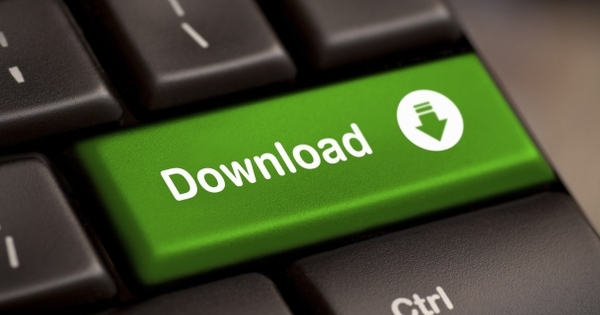Chromebooks are known to many people as laptops that can do little. Unjustly, because precisely because hardware and software are aligned, a Chromebook needs less under the hood to perform well. Most Chromebooks are perfectly capable of acting as a full-fledged private or work laptop. We tell you what you should pay attention to when purchasing.
Tip 01: Chrome OS
This tip has nothing to do with a choice, but with awareness. It is important to know that all Chromebooks are equipped with Chrome OS, instead of Windows. This means that installing and using Windows programs on a Chromebook is not possible. That shouldn't be a problem, because there are thousands of apps that you can download from the Chrome Webstore and Google Play Store and chances are that your favorite program, or a variant thereof, can be found there. However, that's something you'll probably want to check before you decide to buy a Chromebook. After all, it would be a shame if you bought a copy only to discover that you can't do what you wanted.

Tip 02: Size
When Chromebooks were new to the market, the emphasis was very much on low price and as a result, it was mainly about compact models. Chromebooks are still much cheaper than regular laptops, but today there are also more expensive models with more system performance and also a larger size. The latter is something to find out, because just like a Windows laptop or MacBook, a Chromebook can be quite large. A laptop that is too large is not pleasant if you have to carry it with you often, but a laptop that is too small is not pleasant if you have to work on it a lot. So take a good look at what kind of display is in it (how many inches), but also what the actual size of the Chromebook is. There are more and more laptops with a large display, which have such a small bezel around the screen that the size of the laptop is not too bad.

Tip 03: Weight
In addition to the size, the weight is also something to consider. Most Chromebooks don't have a hard drive (instead, an SSD) or optical drive, making them a lot lighter than some Windows laptops. However, there are also Chromebooks that do have a hard drive, and the weight of screens and components can differ greatly. Just like with a laptop that is too large, carrying a laptop that is too heavy is not pleasant. You don't need to hold the Chromebook yourself to test that out, simply check out what the laptop you're looking for weighs, and pick up something that weighs about the same.
 Pay close attention to existing connections, that can prevent unpleasant surprises
Pay close attention to existing connections, that can prevent unpleasant surprises Tip 04: Connections
What we love about Chromebooks is that, despite the limited price tag, people often don't skimp on the connections. You will find an HDMI and USB connection on almost every Chromebook, most copies have a built-in card reader and a few also have a built-in Ethernet port. But which connections are exactly present, differs per brand and model. Sometimes there is HDMI or USB, but with a micro plug, and that is useful to know before you make a purchase. There is also a difference in the USB ports themselves. How many USB ports are there, are they the fastest kind? Is there also usb-type-c present, and so on. After all, you don't want to discover while working that there aren't enough ports to connect both your hard drive and your external mouse.

Tip 05: Screen
We have already discussed the size of the screen in tip 2, but the type of screen is of course also important. Does the Chromebook of your choice have tn technology (deep blacks, high refresh rate) or ips technology (larger viewing angle, better color fidelity)? Is it matte or not, how high is the brightness (so you can also see it well outside)? What is the maximum resolution? full hd? Or 4K (only announced at the time of writing)? And is such a super high resolution important to you, or do you hardly see the difference. These are things that can partly be covered with specifications, but in all honesty we would rather recommend that you go to the store and see the display with your own eyes. You will have to look at it for quite a few hours and then it has to be a screen that you like.

Tip 06: Touch screen
A screen is not always just for looking at, in more and more cases it is also interactive. We see more and more Chromebooks with a touchscreen, which is useful if you don't want to use your mouse all day. We do say right away: don't stare blindly at a touch screen. Such a screen is actually only useful if you have a Chromebook that you can fold completely, so that you turn the laptop into a tablet. In this case, the keyboard is not in view and the touchscreen is your only option. If your Chromebook is not foldable, then in our opinion the touch screen is not very efficient and a shame to pay extra for it.
 There are probably more and more Chromebook tablets with detachable keyboards
There are probably more and more Chromebook tablets with detachable keyboards Tip 07: Detachable screen
This is still a little bit of the future for the Netherlands, but we expect a large number of Chromebooks with 'detachable screens' in the coming year. These are Chromebooks whose system hardware is not located in the body but in the screen part. This results in a Chromebook tablet with a detachable keyboard, instead of a Chromebook laptop with a fixed – and possibly foldable – screen. In terms of design, therefore, comparable to the Microsoft Surface Pro, but as a Chromebook instead of a Windows computer. At the time of writing, only the HP Chromebook X2 of this type of Chromebook was available in the Netherlands, but there will undoubtedly be more. So if this concept appeals to you, it might be an idea to postpone a purchase for another half year for more choice and probably lower prices.

Tip 08: Storage capacity
In an article about Windows laptops, storage capacity would be a breaking point in our opinion. However, charging a Chromebook on its storage capacity would not be fair. Chromebooks are specifically designed with online storage in mind, so a large hard drive or expensive SSD is not necessary. It is good to know that Google gives the owner of a Chromebook 100 GB of storage capacity in Google Drive for free, in addition to the standard storage capacity that the company offers via the cloud service. Nevertheless, it is of course nice if you can also store some things locally (if only to download Netflix movies and series, something that is possible with a Chromebook but not with a Windows laptop). The storage capacity of Chromebooks varies quite a bit. We see Chromebooks with 32 GB storage capacity, but also with 256 GB, and even more than a TB, even though they have a regular hard drive built in. Before making a purchase, think carefully about whether you are often offline (which means you don't have access to cloud storage) and whether you can think of other reasons why offline storage is important to you. If it turns out that this is not the case, you can save a lot of money by going for a small storage capacity.

Tip 09: CPU and Memory
Computing power is also less relevant for a Chromebook than for a Windows laptop, but we don't want to call it unimportant. For example, you can assume that a Chromebook with an Intel Celeron processor and 4 GB of memory is considerably less powerful than a laptop with an Intel Core i5 processor with 8 GB of memory, and you will also see that difference in the price tag. It remains difficult, especially when it comes to a Chromebook, to determine which processor exactly provides which performance. Our experience is that a Chromebook with a price of about six hundred euros is mainly intended for basic things, such as internet, mail, word processing and so on. Chromebooks above that amount are usually powerful enough to handle other things like photo editing and light gaming. Above a thousand euros you can also start thinking about video editing.

Tip 10: Video card
The processor and memory largely determine how much you can do with your Chromebook, but when it comes to graphics applications, such as games and video editing, the built-in video card is of great importance. Unfortunately, we cannot name a specific video card that will allow you to do video editing, in fact, even the distinction between a separate video card and an integrated chip on the motherboard is inconclusive. The easiest thing to do is to see which video card has the Chromebook of your choice on board, and search for the possibilities of that card with Google. This is really worth it, because there are sometimes Chromebooks that surprise you and that allow you to do more for a reasonable price than with models from the competition.

Tip 11: Battery
Finally, in our opinion one of the most important considerations: the capacity of the battery. That differs enormously with Chromebooks. There are many Chromebooks with a battery that lasts about 12 to 14 hours before needing to be charged. However, there are also negative outliers, which only last four hours. That doesn't have to be a big deal. If you mainly power your laptop at home, the battery capacity won't be as exciting. If you often use the Chromebook on the road, then 8 to 10 hours is the least you can expect from the device.

Buying tips
Few products are as diverse in price and performance as Chromebooks. That is why we have listed three different types for you: an entry-level model, a model from the middle segment, and a model from the top class.
Type: Lenovo N23 Chromebook 80YS005JNH
Price: € 229,-
It is unimaginable that you can buy a complete laptop for 229 euros these days, but this N23 from Lenovo proves that that is really no fiction. With a size of 11.6 inches, the display is of course really small, and the Celeron processor and 4 GB memory don't give you a lot of computing power. However, that makes this Chromebook ideal for, for example, school desks, because the laptop is feather-light (1350 grams) and the battery lasts no less than ten (!) hours.
Type: Acer Chromebook 15 CB515-1HT-P9M1
Price: € 569,-
Those who don't want to pay too much, but want a Chromebook with some power under the hood, can go to this model from Acer. An IPS display (full-HD) of no less than 15 inches, and on board an Intel Pentium quad-core processor, 8 GB memory and 64 GB storage capacity. Heavy gaming and video editing is not possible with this laptop, but you don't have to hold back. An ideal interim solution.
Type: Acer Chromebook Spin 13 CP713-1WN-866Q
Price: € 1199,-
Although the touchscreen of this folding Acer Chromebook is a bit on the small side (13.5) inches, this laptop excels in terms of performance. On board, this Chromebook has a powerful Intel Core i7 quad-core processor and a whopping 16 GB of memory. The resolution of the IPS screen is quad-hd, or 2256 x 1504 pixels. A great Chromebook for games, photo and video editing, but order an extra hard drive, because with 128 GB you won't get very far.


